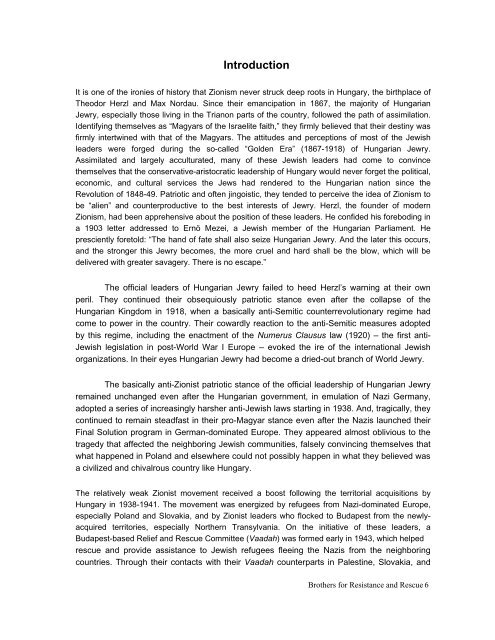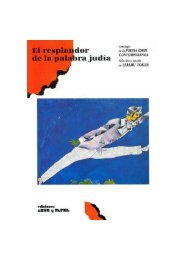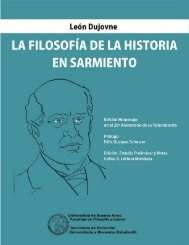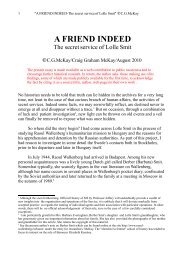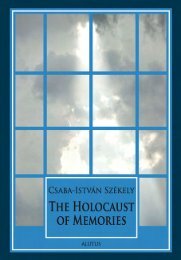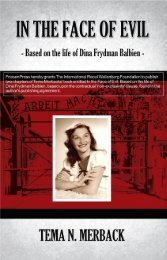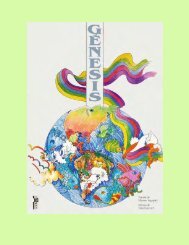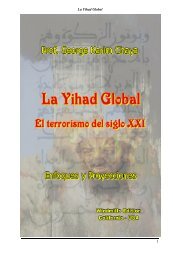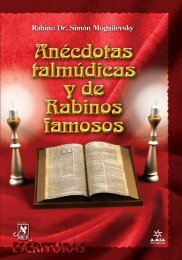Brothers For Resistance And Rescue By David Gur
Brothers For Resistance And Rescue By David Gur
Brothers For Resistance And Rescue By David Gur
- No tags were found...
Create successful ePaper yourself
Turn your PDF publications into a flip-book with our unique Google optimized e-Paper software.
IntroductionIt is one of the ironies of history that Zionism never struck deep roots in Hungary, the birthplace ofTheodor Herzl and Max Nordau. Since their emancipation in 1867, the majority of HungarianJewry, especially those living in the Trianon parts of the country, followed the path of assimilation.Identifying themselves as “Magyars of the Israelite faith,” they firmly believed that their destiny wasfirmly intertwined with that of the Magyars. The attitudes and perceptions of most of the Jewishleaders were forged during the so-called “Golden Era” (1867-1918) of Hungarian Jewry.Assimilated and largely acculturated, many of these Jewish leaders had come to convincethemselves that the conservative-aristocratic leadership of Hungary would never forget the political,economic, and cultural services the Jews had rendered to the Hungarian nation since theRevolution of 1848-49. Patriotic and often jingoistic, they tended to perceive the idea of Zionism tobe “alien” and counterproductive to the best interests of Jewry. Herzl, the founder of modernZionism, had been apprehensive about the position of these leaders. He confided his foreboding ina 1903 letter addressed to Ernö Mezei, a Jewish member of the Hungarian Parliament. Hepresciently foretold: “The hand of fate shall also seize Hungarian Jewry. <strong>And</strong> the later this occurs,and the stronger this Jewry becomes, the more cruel and hard shall be the blow, which will bedelivered with greater savagery. There is no escape.”The official leaders of Hungarian Jewry failed to heed Herzl’s warning at their ownperil. They continued their obsequiously patriotic stance even after the collapse of theHungarian Kingdom in 1918, when a basically anti-Semitic counterrevolutionary regime hadcome to power in the country. Their cowardly reaction to the anti-Semitic measures adoptedby this regime, including the enactment of the Numerus Clausus law (1920) – the first anti-Jewish legislation in post-World War I Europe – evoked the ire of the international Jewishorganizations. In their eyes Hungarian Jewry had become a dried-out branch of World Jewry.The basically anti-Zionist patriotic stance of the official leadership of Hungarian Jewryremained unchanged even after the Hungarian government, in emulation of Nazi Germany,adopted a series of increasingly harsher anti-Jewish laws starting in 1938. <strong>And</strong>, tragically, theycontinued to remain steadfast in their pro-Magyar stance even after the Nazis launched theirFinal Solution program in German-dominated Europe. They appeared almost oblivious to thetragedy that affected the neighboring Jewish communities, falsely convincing themselves thatwhat happened in Poland and elsewhere could not possibly happen in what they believed wasa civilized and chivalrous country like Hungary.The relatively weak Zionist movement received a boost following the territorial acquisitions byHungary in 1938-1941. The movement was energized by refugees from Nazi-dominated Europe,especially Poland and Slovakia, and by Zionist leaders who flocked to Budapest from the newlyacquiredterritories, especially Northern Transylvania. On the initiative of these leaders, aBudapest-based Relief and <strong>Rescue</strong> Committee (Vaadah) was formed early in 1943, which helpedrescue and provide assistance to Jewish refugees fleeing the Nazis from the neighboringcountries. Through their contacts with their Vaadah counterparts in Palestine, Slovakia, and<strong>Brothers</strong> for <strong>Resistance</strong> and <strong>Rescue</strong> 6


